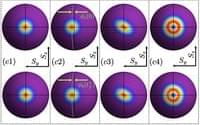At the core of the operation is a previously undocumented NFC relay technique that enables threat actors to fraudulently authorize point-of-sale (PoS) payments and Automated Teller Machine (ATM) withdrawals by intercepting and relaying NFC communications from infected devices.
To do this, the attackers urge the victims to bring their debit or credit card in close physical proximity to their mobile device, which then allows the SuperCard X malware to stealthily capture the transmitted card details and relay them to an external server. The harvested card information is then utilized on a threat actor-controlled device to conduct unauthorized transactions.
The application that’s distributed to victims for capturing NFC card data is called a Reader. A similar app known as Tapper is installed on the threat actor’s device to receive the card information. Communication between the Reader and Tapper is carried out using HTTP for command-and-control (C2) and requires cybercriminals to be logged in.









